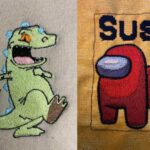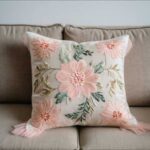Dimensional Concepts
A Beginner's Guide To Puff Embroidery Digitizing
Introduction
Embroidery digitizing has revolutionized the way designs are created and executed on fabric. Among the various techniques, puff embroidery digitizing stands out for its unique three dimensional effect, adding depth and texture to designs. For beginners eager to delve into this fascinating realm, understanding the basics and mastering the digitizing process is essential. In this comprehensive guide, we’ll explore everything you need to know about puff embroidery digitizing, from selecting the right software to troubleshooting common issues.
Embroidery enthusiasts are constantly seeking ways to elevate their craft, and puff embroidery offers an exciting avenue for experimentation and creativity. Whether you’re a hobbyist looking to add a unique touch to your projects or a professional seeking to expand your repertoire, mastering puff embroidery digitizing opens up a world of possibilities. With the right knowledge and techniques at your disposal, you can transform ordinary designs into captivating works of art that stand out from the crowd. Join us as we embark on this journey to unlock the secrets of puff embroidery digitizing and unleash your creative potential.
Puff Embroidery Digitizing Fundamentals
Puff embroidery digitizing involves creating designs that incorporate a raised, padded effect, resembling puffy or three dimensional shapes. This effect is achieved by adding a layer of foam or special puff embroidery backing beneath the stitches, creating a raised surface. Digitizing software plays a crucial role in translating designs into stitch patterns compatible with embroidery machines.
Embroidery enthusiasts are constantly seeking ways to elevate their craft, and puff embroidery offers an exciting avenue for experimentation and creativity. Whether you’re a hobbyist looking to add a unique touch to your projects or a professional seeking to expand your repertoire, mastering puff embroidery digitizing opens up a world of possibilities. With the right knowledge and techniques at your disposal, you can transform ordinary designs into captivating works of art that stand out from the crowd. Join us as we embark on this journey to unlock the secrets of puff embroidery digitizing and unleash your creative potential.
Choosing the right digitizing software is crucial for achieving optimal results in puff embroidery. High quality software packages offer advanced features specifically designed for puff embroidery, such as tools for creating underlay stitches to support the raised effect and options for adjusting stitch density to control the thickness of the raised areas. By selecting the appropriate software and familiarizing yourself with its features, you’ll be better equipped to bring your puff embroidery designs to life with precision and finesse.
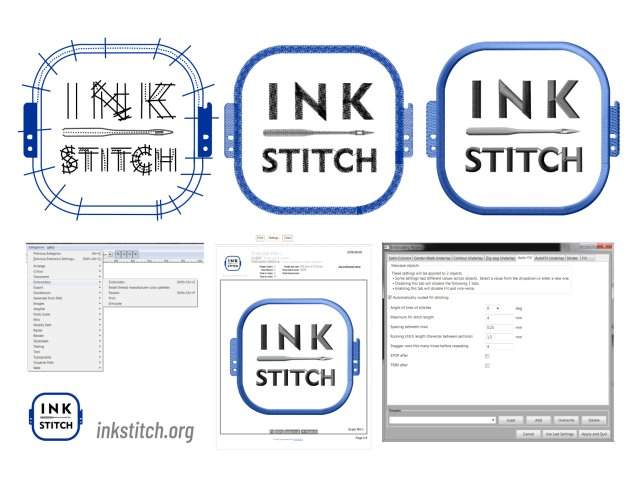
Choosing the Right Digitizing Software
Selecting the appropriate digitizing software is a crucial step in mastering puff embroidery digitizing. With a plethora of options available in the market, it’s essential to consider your specific needs and requirements before making a decision. Popular choices include industry leading software such as Wilcom, Hatch Embroidery, Pulse, Tajima DG/ML by Pulse, Ink/Stitch, and Embrilliance.
Wilcom is renowned for its robust feature set and intuitive interface, making it a favorite among professional embroiderers. With advanced tools tailored for puff embroidery, including precise control over stitch types and densities, Wilcom offers unparalleled versatility and precision.
Hatch Embroidery, developed by Wilcom, caters to both beginners and seasoned professionals with its user friendly interface and comprehensive design tools. From digitizing simple shapes to creating intricate puff embroidery designs, Hatch Embroidery provides the flexibility and functionality needed to bring your creative vision to life.
Pulse is another industry leader known for its powerful digitizing capabilities and compatibility with a wide range of embroidery machines. With built in features specifically designed for puff embroidery, such as underlay options for supporting the raised effect, Pulse empowers embroiderers to achieve stunning results with ease.
Tajima DG/ML by Pulse is a popular choice among professional embroiderers for its advanced digitizing tools and seamless integration with Tajima embroidery machines. With customizable stitch settings and robust design management features, Tajima DG/ML by Pulse offers unparalleled control and precision for creating intricate puff embroidery designs.
Ink/Stitch is an open source option that provides powerful digitizing capabilities for creating puff embroidery designs. With its intuitive interface and comprehensive set of tools, including features for creating underlay stitches and adjusting stitch densities, Ink/Stitch offers a cost effective solution for both beginners and experienced embroiderers alike.
Embrilliance is a versatile software suite that offers a range of tools for embroidery design, including digitizing capabilities suitable for puff embroidery. With its user friendly interface and innovative features, such as automatic thread color selection and easy resizing options, Embrilliance simplifies the digitizing process and enables embroiderers to create stunning puff embroidery designs with ease.
When selecting digitizing software for puff embroidery, consider factors such as your budget, level of expertise, and specific design requirements. Take advantage of trial versions or demos to test different software packages and determine which one best suits your needs. It’s worth noting that besides the mentioned software options, there are other alternatives available in the market, each with its own set of features and methods for completing puff embroidery digitizing. Explore these options to find the one that aligns with your workflow and preferences, ensuring that you have the tools necessary to bring your puff embroidery designs to life.
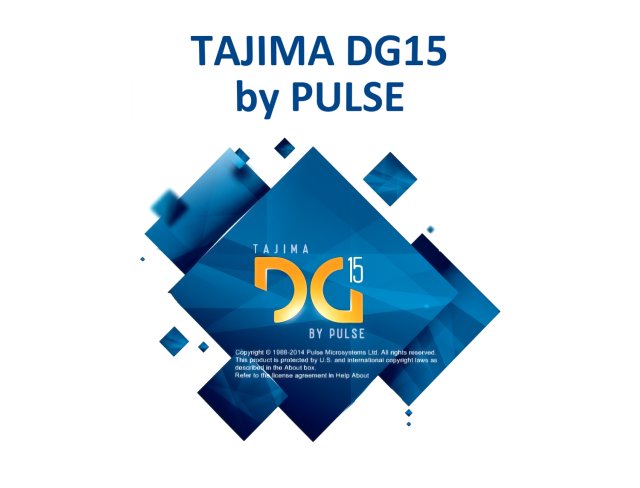
Step-by-Step Process for Puff Embroidery Digitizing with Ink/Stitch
1. Design Selection: The initial step in the process of puff embroidery digitizing with Ink/Stitch begins with selecting or creating a design that is suitable for the desired puff effect. When choosing a design, consider elements that will benefit from the three dimensional texture that puff embroidery offers. Designs with clear, distinct features, such as text, logos, or bold graphics, often lend themselves well to puff embroidery.
If you’re creating your own design, keep in mind that simplicity can be key. Avoid overly intricate or detailed designs, as they may not translate effectively into puff embroidery. Instead, opt for designs with well defined shapes and minimal intricate details.
Additionally, consider the size of your design and the placement on the garment or fabric. Puff embroidery can add thickness and dimension to your design, so it’s important to ensure that the chosen design and placement will complement the overall look and feel of the finished product.
Before proceeding to digitize the design, it’s advisable to visualize how the puff effect will enhance the design’s aesthetics. Experiment with different design elements and compositions to determine the most effective approach for achieving the desired puff embroidery effect.
By carefully selecting or creating a design that is well suited for puff embroidery, you set the foundation for a successful digitizing process that will result in a visually striking and professionally executed embroidered piece.
2. Digitizing Setup: Once you have selected or created a suitable design for puff embroidery, the next step is to set up your digitizing environment within Ink/Stitch. Start by launching the software and importing your chosen design file. Ink/Stitch supports various file formats, including popular options like SVG (Scalable Vector Graphics) and PNG (Portable Network Graphics), allowing you to work with a wide range of design files.
Before proceeding, take a moment to review the design and assess its suitability for puff embroidery. Pay attention to details such as the complexity of the design, the size of individual elements, and any areas that may require special attention during digitizing.
With the design imported, you can now begin the digitizing process by configuring the necessary settings. This includes selecting appropriate stitch types and adjusting stitch parameters such as density and length. For puff embroidery, consider using fill stitches or satin stitches to create the raised effect. Experiment with different stitch types to achieve the desired texture and appearance for your design.
When adjusting stitch density, keep in mind the thickness of the puff material you’ll be using. Higher density stitches will result in a denser, more pronounced puff effect, while lower density stitches will produce a softer, more subtle effect. Strike a balance between density and puff material thickness to achieve the desired level of dimensionality in your design.
In addition to stitch settings, take advantage of Ink/Stitch’s features for creating start and end stitches. Start stitches secure the thread at the beginning of each section of stitching, while end stitches provide a clean finish. Properly configured start and end stitches help prevent thread unraveling and ensure the integrity of your embroidered design.
Finally, consider implementing trim stitching between sections of stitching to trim excess thread and maintain clean transitions. Trim stitching helps streamline the embroidery process and minimizes the need for manual trimming, resulting in a more efficient and polished final product.
By carefully configuring the digitizing setup in Ink/Stitch, you lay the groundwork for a successful puff embroidery digitizing process. With the right settings in place, you’ll be ready to move on to the next steps and bring your puff embroidery design to life with precision and finesse.

3. Puff Effect Identification: After setting up your digitizing environment in Ink/Stitch, the next crucial step is to identify the areas of your design where you want to create the puff effect. These are the regions that will be filled with additional stitches to achieve the raised, three dimensional appearance characteristic of puff embroidery.
To effectively identify these areas, carefully examine your design and look for elements that would benefit from the added dimensionality provided by puff embroidery. This could include text, logos, icons, or other graphical elements that you want to emphasize or highlight.
Once you’ve identified the areas for the puff effect, mark them within your design using the tools available in Ink/Stitch. You can use drawing tools to outline the desired regions or create shapes that correspond to the areas you want to puff. Alternatively, you can manually digitize these areas by adding extra stitches or adjusting the stitch properties to create the raised effect.
Keep in mind that the size and shape of the puff areas will influence the overall appearance of your embroidered design. Experiment with different configurations to find the optimal balance between dimensionality and visual aesthetics. You may also want to consider the thickness of the puff material you’ll be using and adjust the size of the puff areas accordingly to achieve the desired puffiness.
As you identify the puff effect areas, visualize how they will enhance the overall design and contribute to the final look of your embroidered piece. Consider factors such as contrast, balance, and composition to ensure that the puff effect complements the rest of the design elements seamlessly.
By carefully identifying the areas for the puff effect, you lay the foundation for a successful puff embroidery digitizing process. With a clear understanding of where to apply the raised effect, you’ll be ready to move on to the next steps and begin digitizing your design with precision and confidence.
4. Underlay Implementation: Implementing underlay stitches is a crucial step in achieving high quality puff embroidery results with Ink/Stitch. Underlay provides stability and support for the raised effect, helping to maintain the shape and definition of the puff areas during stitching.
In Ink/Stitch, underlay stitches can be added using the dedicated “Underlay” feature, which allows you to define the type, density, and placement of underlay stitches within your design. Underlay options may include running stitches, zigzag stitches, or fill stitches, depending on the requirements of your design and the desired level of support.
Alternatively, underlay stitches can be manually digitized by adding extra stitching beneath the designated puff areas. This approach gives you greater control over the placement and density of the underlay stitches, allowing you to tailor them to the specific needs of your design.
While underlay is not always mandatory for puff embroidery, it is often recommended, especially for larger or more intricate designs. Underlay helps prevent the puff material from shifting or sagging during stitching, resulting in a more defined and uniform raised effect. Additionally, underlay stitches can improve stitch registration and overall embroidery quality, particularly on stretchy or unstable fabrics.
However, for smaller or simpler designs, or when using thicker puff materials, underlay may be optional. In these cases, the puff material itself may provide sufficient support for the raised effect, and additional underlay stitches may not be necessary. It’s essential to assess each design individually and determine whether underlay is needed based on factors such as design complexity, fabric type, and puff material thickness.
By carefully implementing underlay stitches beneath the designated puff areas, you ensure stability and support for the raised effect, resulting in crisp, defined embroidery with a uniform three dimensional appearance. Experiment with different underlay options and techniques to find the optimal approach for each design, and adjust as needed to achieve the best results.
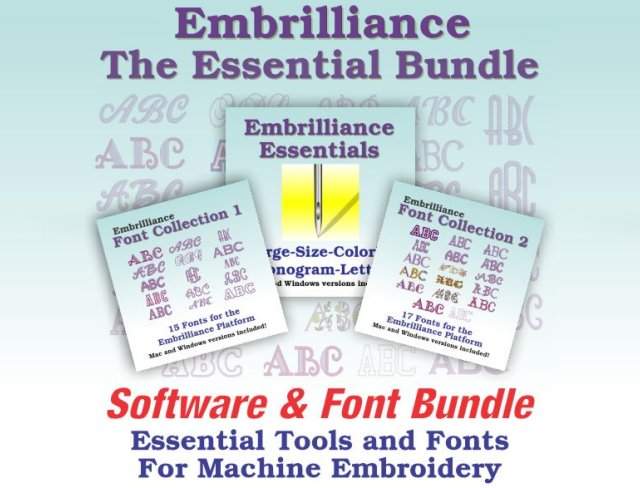
5. Stitch Optimization: Stitch optimization is a critical aspect of puff embroidery digitizing with Ink/Stitch, as it directly influences the final appearance and quality of your embroidered design. This step involves fine tuning stitch settings to achieve the desired puffiness, texture, and aesthetic in your design.
Start by adjusting the stitch density to control the thickness of the raised areas and ensure proper coverage. Higher density stitches will result in a denser, more pronounced puff effect, while lower density stitches will produce a softer, more subtle effect. Experiment with different density settings to find the optimal balance for your design, taking into account factors such as the size of the puff areas and the thickness of the puff material.
In addition to stitch density, consider the type of stitches used in your design. Satin stitches and fill stitches are commonly used for puff embroidery, as they provide a smooth, uniform surface for the raised effect. Experiment with different stitch types and combinations to achieve the desired texture and appearance in your design.
As you optimize the stitch settings, pay close attention to the overall aesthetics of your design. Ensure that the puff areas blend seamlessly with the rest of the design elements, maintaining a cohesive and visually appealing composition. Adjust stitch parameters as needed to achieve smooth transitions and crisp, defined edges throughout the design.
Ink/Stitch offers a range of tools and features for stitch optimization, allowing you to customize stitch properties with precision and control. Take advantage of these tools to fine tune stitch settings and refine the appearance of your embroidered design to perfection.
Additionally, include start stitches and end stitches in your digitized design to secure the thread at the beginning and end of each section of stitching. Start stitches prevent thread unraveling and ensure proper stitch placement, while end stitches provide a clean finish and prevent loose threads from detracting from the overall appearance of the design.
Lastly, consider implementing trim stitching between sections of stitching to trim excess thread and maintain clean transitions. Trim stitching helps streamline the embroidery process and ensures that your design is free from unsightly thread tails, resulting in a polished and professional finish.
By optimizing stitch settings and incorporating start stitches, end stitches, and trim stitching into your digitized design, you ensure that your puff embroidery design is executed with precision and finesse, resulting in a visually striking and professionally finished embroidered piece. Experiment with different settings and techniques to achieve the desired puff effect and bring your creative vision to life with confidence.
6. Simulation and Adjustment: After completing the digitizing process for your puff embroidery design in Ink/Stitch, the next step is to simulate the design to preview how it will stitch out on your embroidery machine. The simulation feature allows you to visualize the stitching sequence, thread colors, and overall appearance of the design before committing to embroidery.
Start by selecting the simulation option within Ink/Stitch, which will generate a virtual representation of your design on screen. Take the time to carefully review the simulation, paying attention to details such as stitch placement, density, and alignment. This step is crucial for identifying any potential issues or areas that may require adjustment before stitching.
As you review the simulation, look for areas where the puff effect may not be as pronounced as desired, or where stitches may appear too dense or sparse. Use the simulation tools within Ink/Stitch to zoom in on specific areas of the design and evaluate them in detail.
If adjustments are needed, return to the digitizing workspace in Ink/Stitch and make the necessary changes to the design. This may involve tweaking stitch settings, adjusting the placement of puff areas, or refining the overall composition of the design.
After making adjustments, repeat the simulation process to verify that the changes have been implemented correctly and that the design now meets your expectations. Continue to iterate on the design as needed, making adjustments and simulating the results until you are satisfied with the final appearance.
In addition to simulation, consider testing the design on a sample piece of fabric or material similar to what you’ll be embroidering on. This allows you to evaluate how the design stitches out in real life and identify any issues that may not be apparent in the simulation.
Once you are confident that the design is ready for embroidery, save the digitized file in a compatible format for your embroidery machine. Ensure that the file is properly formatted and compatible with your machine’s requirements to avoid issues during stitching.
By utilizing the simulation and adjustment features within Ink/Stitch, you can fine tune your puff embroidery design with precision and confidence, ensuring that it stitches out flawlessly on your embroidery machine. Take the time to review the simulation carefully and make any necessary adjustments to achieve the best possible results. With careful attention to detail and iterative refinement, you’ll be well on your way to creating stunning puff embroidery designs that captivate and impress.
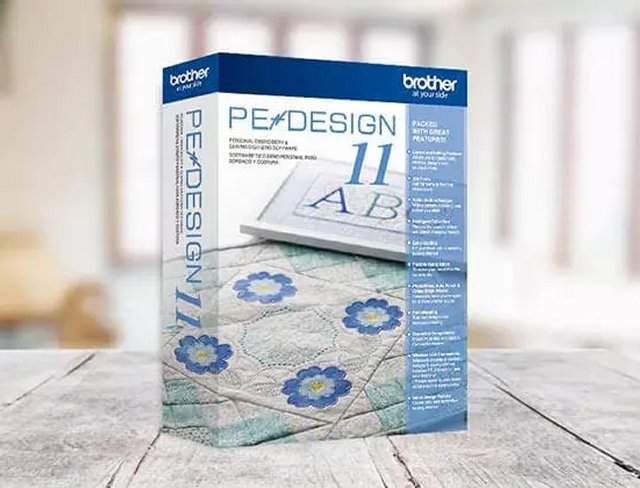
7. Saving and Exporting: Once you have completed digitizing, simulating, and adjusting your puff embroidery design in Ink/Stitch, the final step is to save and export the digitized file for use with your embroidery machine. Properly saving and exporting the file ensures that it is compatible with your machine’s requirements and ready for stitching.
Start by saving the digitized file within Ink/Stitch using the appropriate file format for your embroidery machine. Common file formats for embroidery digitizing include DST, EXP, PES, and XXX, among others. Consult your embroidery machine’s user manual or specifications to determine the preferred file format for compatibility.
When saving the file, be sure to give it a descriptive name that reflects the design and any relevant details, such as size, color scheme, or intended use. This will make it easier to identify and locate the file when loading it onto your embroidery machine.
In addition to saving the file locally on your computer, consider creating backups or duplicates for safekeeping. Store these backups in a secure location, such as an external hard drive or cloud storage service, to protect against loss or corruption of the original file.
Once the file is saved, you can proceed to export it for use with your embroidery machine. Most embroidery machines accept files via USB drive or direct connection to your computer. Transfer the saved file to your preferred storage device, ensuring that it is formatted correctly and compatible with your machine.
Before exporting the file, double check the design settings and specifications to ensure they match your machine’s requirements. Pay attention to details such as stitch count, color sequence, and hoop size to avoid compatibility issues during stitching.
If necessary, create multiple versions of the file with different settings or variations to accommodate different machine setups or preferences. This can help streamline the stitching process and ensure optimal results on different types of fabric or materials.
Once the file is saved and exported, you’re ready to load it onto your embroidery machine and begin stitching. Follow the instructions provided by your machine manufacturer for loading and stitching out the design, and monitor the stitching process closely to ensure smooth and accurate execution.
By properly saving and exporting the digitized file in Ink/Stitch, you ensure seamless compatibility with your embroidery machine and set yourself up for success in bringing your puff embroidery design to life. Take the time to double check settings and specifications before exporting, and maintain backups for added peace of mind. With the file ready and loaded onto your machine, you’re one step closer to creating stunning puff embroidery designs that delight and impress.

Troubleshooting Common Issues:
Embroidering puff designs can sometimes present challenges that require troubleshooting to achieve the desired results. Here are some common issues you may encounter and their corresponding solutions:
• Poor Puff Definition: If your puff areas lack definition, adjust stitch density and underlay settings to improve the definition of the raised areas. Experiment with different settings until you achieve the desired level of puffiness and clarity in your design.
• Uneven Puffiness: Uneven puffiness can occur due to inconsistent tension or thread thickness throughout the embroidery process. Ensure consistent tension and thread thickness by checking your embroidery machine settings and using quality thread. Additionally, consider using stabilizers or backing materials to help maintain even tension and prevent distortion.
• Foam Slippage: Foam slippage can occur if the foam backing is not securely attached to the fabric or if it shifts during embroidery. Ensure the foam backing is properly secured to prevent shifting or bunching, which can distort the raised effect. Consider using adhesive spray or temporary adhesive backing to hold the foam in place during embroidery.
• Thread Breakage: Thread breakage can occur, especially when stitching over raised areas. Use appropriate needle and thread combinations for puff embroidery to minimize the risk of breakage. Consider using specialty needles designed for puff embroidery and quality thread that can withstand the stitching process without breaking.
• Thread Trimming Errors: Ensure that trim stitching is properly implemented between sections of stitching to prevent excess thread buildup and minimize the risk of thread trimming errors during embroidery. Adjust trim stitching settings as needed to achieve clean, precise trimming without compromising the integrity of the design.
• Puckering or Wrinkling: Puckering or wrinkling may occur due to improper tension settings or inadequate stabilization. Adjust tension settings on your embroidery machine to achieve optimal tension for the fabric and design. Additionally, use stabilizers or backing materials to prevent puckering or wrinkling, especially on delicate or stretchy fabrics.
• Design Distortion: Check for design distortion caused by improper hooping or fabric stretching during embroidery. Ensure the fabric is securely hooped and that the design is centered and aligned correctly to minimize distortion. Avoid overstretching the fabric or hooping too tightly, as this can distort the design during stitching.
• Needle Deflection: Use appropriate needle sizes and types for puff embroidery to prevent needle deflection. Specialty needles designed specifically for puff embroidery can minimize deflection and achieve cleaner, more precise stitching. Check needle condition regularly and replace as needed to maintain optimal stitching quality.
• Color Bleeding: Test thread colors and materials on sample pieces of fabric to ensure compatibility and prevent color bleeding or migration during embroidery. Use color fast threads and prewash fabrics, if necessary, to minimize the risk of color bleeding in finished embroidered pieces.
• Machine Jamming: Regularly clean and maintain your embroidery machine to prevent machine jamming and ensure smooth, uninterrupted stitching. Check for obstructions in the bobbin area, thread tension issues, and worn or damaged machine parts that may contribute to machine jamming. Lubricate moving parts as recommended by the manufacturer to keep the machine running smoothly.
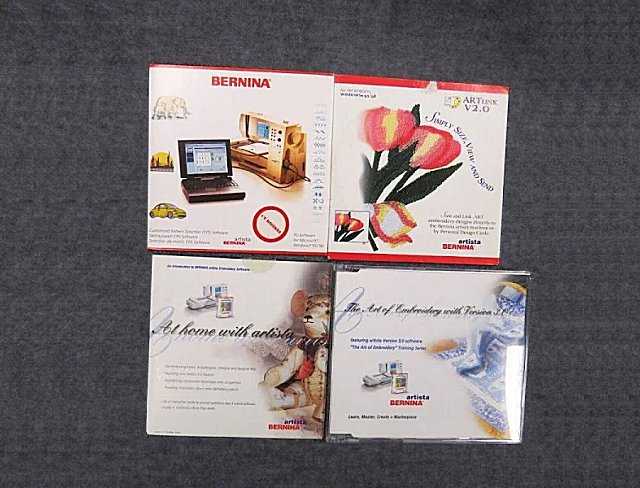
By addressing these common issues and implementing appropriate troubleshooting techniques, you can overcome challenges and achieve optimal results in your puff embroidery projects. Remember to troubleshoot systematically, starting with the most likely causes and working through potential solutions until the issue is resolved. With patience and attention to detail, you’ll be able to create stunning puff embroidery designs with confidence and precision.
Conclusion
Embarking on the journey of puff embroidery digitizing opens up a world of creative possibilities, allowing you to breathe life into your designs with stunning three dimensional effects. By selecting the right digitizing software, mastering the step-by-step process, and troubleshooting common issues, beginners can confidently create intricate and eye catching puff embroidery designs. With practice and perseverance, you’ll soon become adept at harnessing the power of puff embroidery to elevate your creations to new heights.
Furthermore, as you gain experience and refine your skills in puff embroidery digitizing, don’t hesitate to explore new techniques and experiment with different materials and designs. Puff embroidery offers endless opportunities for innovation and expression, so don’t be afraid to push the boundaries of traditional embroidery and push your creative boundaries. Whether you’re embellishing garments, accessories, or decorative items, puff embroidery adds a touch of luxury and dimensionality that is sure to captivate and impress. So, embrace the journey, embrace the challenge, and let your imagination soar as you embark on your puff embroidery digitizing adventure.
Now that you have read through this article, feel free to SHOP for products we have created. If you are looking for something special which isn’t in our store, feel free to contact us.


